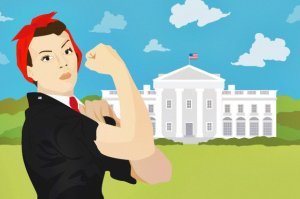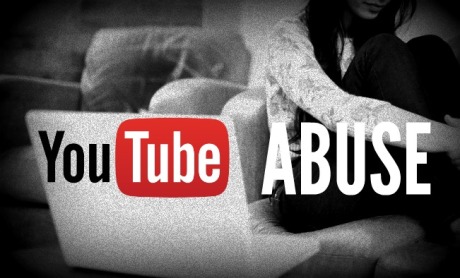How Negative Media Coverage Affects the Whole Nation
If women officials continue not to run for political offices because of the negative publicity regarding women politicians politics will continue to be male dominated and more women will feel discouraged to enter politics. If women continue to feel discouraged numbers will either stay stagnant or decrease. In regards to the world, America lacks in female government officials. On the list of worldwide rankings of women in the national legislature the United States is ranked 91 of all countries. Whereas the international average of 19.3% of women politicians, the United States average of women politicians is a mere 16.9% (Lawless and Fox). This makes our nation appear behind the times in comparison with other nations including developing nations. It may even appear to other countries that our nation is sexist and stuck in the past. By electing more women to the federal government, the American people would be electing more perceptions and insight into political issues. Men and women often differ in modes of thinking, and there are many issues the government is facing that a different perspective could help through decision-making.
Without women in the house, presidency, etc. half of the population is affected because men are not voting on issues that affect women and families. Not voting on women’s issues affects the whole nation. When discussing women’s reproductive rights and equal pay equal work many people think this only affects women, but that is not true. Families, which often consist of men, are affected because of high costs for childcare. Women’s access to more reproductive rights also affects men because these laws affect their wives and daughters. Equal pay, equal work affects the whole nation because if women made more they could put more into the economy by being able to afford life’s necessities instead of living below the poverty line. With more women in office, the legislation regarding women, children, low-income families, and the environment are all affected for the better.
Another reasons the low number of women in politics is so detrimental to the nation is because of the effect these numbers have on the future of the United States. David Campbell and Christina Wolbrecht in their article, “See Jane Run” note that, “visibility increases the likelihood that the presence of women will be noted and thus potentially shape girls’ interests” (Campbell and Wolbrecht 235). If more women run, young girls will take notice and could possibly choose to enter politics when they grow up. The government needs more women. Having more women means that more of the country is represented by our democracy. Clearly, women can be just as effective leaders as men and the country could use more qualified women officials in the federal government. An increase in the number of women politicians would have a positive outcome that would benefit the people of the United States.
How More Women in Office Would and Does Affect the Nation for the Better
- Women would combat “anti-woman legislation” — this legislation includes cutting education, health and nutrition services to low-income women and their families (Heuvel).
- Women are more likely to vote on issues like equal pay equal work to support the women in our nation.
- Women, regardless of party, vote more consistently in favor of environmental protection (Volden, Wisemen, Wittmer).
- Women also vote more consistently to prioritize issues that effect families and children (Anzia and Berry).
- Women get more bills to go further through legislation. These bills are likely to be deemed important in the media (Anzia and Berry 490).
- Women representation means congressional districts will receive more federal funding. (Anzia and Berry 485)
- Women are more likely to vote for issues regarding reproductive rights (Lawless).
- Surveys have demonstrated that women of both parties are more likely than men to mention the needs of vulnerable populations when asked about the nation’s problems.
The Current Situation and The Solutions
More women are entering politics slowly but surely. Media coverage is progressing but not to where it should be. The media coverage in 2008 of women candidates was very sexist in regards to Hillary Clinton, Sarah Palin, and Nancy Pelosi. Since no women ran for president or vice president in 2012 there is less regarding recent coverage of women politicians.
By now the media and news should be free of sexist comments and gendered stereotypes. Diana Carlin and Kelly Winfrey in their article, “Have You Come a Long Way, Baby” suggest that, “One clear lesson is that the media needs to carefully examine the breadth and depth of the sexism and do more than accept rather weak apologies from major media personalities” (Carlin, Winfrey 339). Another suggestion is to have political candidates tackle sexist media in their campaigns. This would demonstrate that women are not going to back down because of sexism.
Preparing journalism and communication students to write without stereotypes and sexism while in college would also benefit women politicians. Many anchors, editors, and writers start out in college. If journalism and communications professors give clear, precise examples of sexism in the media and warn their students not to write in this manner, then these students will bring their good, unbiased views to the newsrooms. Bringing awareness to the nation of this all too common phenomenon is key to overcoming this barrier for women politicians. The nation will be better off because of the increase in women’s political participation. Hopefully, for the 2016 elections the media will be less sexist to its women candidates and more women will feel encouraged to vote and possibly even run for office.
Works Cited
Anzia, Sarah F., and Christopher R. Berry. “The Jackie (And Jill) Robinson Effect: Why Do Congresswomen Outperform Congressmen?.” American Journal Of Political Science 55.3 (2011): 478-493. Business Source Premier. Web. 27 Oct. 2014.
Campbell, David E. and Christina Wolbrecht. 2006. “See Jane Run: Women Politicians as Role Models for Adolescents.” Journal of Politics 68(2):233-47.
Carlin, Diana B., and Kelly L. Winfrey. “Have You Come a Long Way, Baby? Hillary Clinton, Sarah Palin, and Sexism in 2008 Campaign Coverage.” Communication Studies 60.4 (2009): 326-43. Academic Search Premier. Web. 26 Oct. 2014.
Heuvel, Katrina V. “More Women Candidates Needed to Stem Anti-woman Tide.” Washington Post. The Washington Post, 20 Aug. 2013. Web. 01 Nov. 2014.
Lawless, Jennifer L.; Fox, Richard L. “Men Rule: The Continued Under-Representation of Women in U.S. Politics,” Washington, DC: Women & Politics Institute, January 2012. <http://www.american.edu/spa/wpi/upload/2012-men-rule-report-final-web.pdf>.
Volden, Craig, Alan Wiseman, and Dana Wittmer. “Women’s Issues and Their Fates in Congress.” Center for the Study of Democratic Institutions (2013): 1-40. Vanderbilt University, 2013. Web. 31 Oct. 2014.
Kelsey Short is a Senior, English Major at Marywood University. She has minors in writing and history. She has a passion for books and movies. She is a lover of almost all living creatures and has been a vegetarian for 7 years. She is the one of the most indecisive person you will ever meet. One thing she has decided is that she is a feminist. Feminist Writing and Rhetoric has helped her to broaden her feminist horizon.




